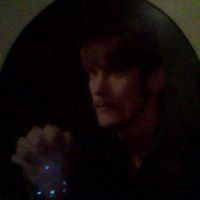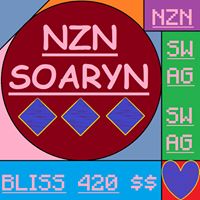Allen Nordstrom Tanner
age ~40
from Provo, UT
Allen Tanner Phones & Addresses
- Provo, UT
Resumes

Allen Tanner
view source
Allen Tanner
view source
Allen Tanner
view source
Allen Tanner
view source
Allen Tanner
view source
Allen Oliver Tanner
view source
Allen Tanner
view sourceName / Title
Company / Classification
Phones & Addresses
President
East Grouse Creek Water Co Ltd Inc
Water Supply Service
Water Supply Service
5976 S 200 E, Salt Lake City, UT 84107
8012680704
8012680704
THE GERMAN ME CHURCH PRESERVATION ASSOCIATION, INC
Us Patents
-
Stroke To Raster Converter System
view source -
US Patent:6496160, Dec 17, 2002
-
Filed:Apr 29, 1999
-
Appl. No.:09/301947
-
Inventors:Allen H. Tanner - Sandy UT
Calvin L. Simmons - Bountiful UT -
Assignee:Evans Sutherland Computer Corporation - Salt Lake City UT
-
International Classification:G09G 500
-
US Classification:345 31, 345 32, 345 10, 345 14, 345 17, 345 27, 345545, 348399, 348440, 348571, 348572
-
Abstract:An apparatus for converting analog stroke display signals representing electron beam generated stroke traces into raster display information for producing a raster-scan image display. The apparatus includes a sampling circuit for sampling the analog stroke display signals to produce pixel data representing sub-pixel locations covered by the stroke traces. A frame buffer is coupled to the sampling circuit to temporarily store pixel data. A filter is coupled to the frame buffer for calculating brightness of pixels based upon the amount of coverage of the pixels by a stroke trace. In addition, a raster-scan display device is coupled to the filter for receiving the pixel data from the filter to produce a raster-scan image.
-
Rapidly Oscillating Laser Light Source
view source -
US Patent:6711187, Mar 23, 2004
-
Filed:Apr 22, 2002
-
Appl. No.:10/127987
-
Inventors:Allen H. Tanner - Sandy UT
Dennis F. Elkins - Draper UT
Cameron C. Farmer - Sandy UT
Yuri S. Grapov - Sandy UT -
Assignee:Evans Sutherland Computer Corporation - Salt Lake City UT
-
International Classification:H01S 313
-
US Classification:372 30, 372 25
-
Abstract:A rapidly oscillating laser light source is produced that exhibits extended pulse duration having a substantially uniform amplified output. A pulsed beam of laser light having a given wavelength, frequency, duration and intensity is produced such that the pulse shape is controlled. The pulsed beam is amplified using a fiber amplifier which exhibits inherent changes in amplifier gain at the frequencies of interest. The fiber amplifier is continuously pumped. A feedback signal is provided with the amplified pulse characteristics and is used to adjust the pulse shape of the pulsed beam of laser light before amplifying, such that the intensity is changed over the pulse duration to generate a substantially uniform amplified output during each pulse.
-
Non-Sampled Auto-Format Conversion Method
view source -
US Patent:6751001, Jun 15, 2004
-
Filed:Jan 24, 2003
-
Appl. No.:10/350917
-
Inventors:Allen H. Tanner - Sandy UT
Aaron S. McAllister - Sandy UT -
Assignee:Evans Sutherland Computer Corporation - Salt Lake City UT
-
International Classification:G02F 101
-
US Classification:359238, 359276, 359278
-
Abstract:A device for the passive conversion of one format to another includes: a laser light source at a predetermined frequency, a line converter configured to produce a fan of light, a movable lens configured to collimate the fan of light, and an array of light modulators placed such that the collimated light is incident on a portion of the light modulators. Vertical pixels of an input image are reproduced on either 1, 2, 3, etc, adjacent light modulators depending on the target image size to produce a modulated light column. Any discrepancy between the modulated light column height and the target image height is compensated for using a zoom lens. The modulated light column is then reflected to a display surface. An entire image is produced by changing the state of the array of light modulators to correspond with each of the vertical columns of the image and sweeping the vertical columns across the display surface. The method accomplishes the format conversion passively, in that, simple calculations are performed only once for each input image size.
-
Apparatus And Method For Frequency Conversion And Mixing Of Laser Light
view source -
US Patent:6763042, Jul 13, 2004
-
Filed:Dec 14, 2001
-
Appl. No.:10/017162
-
Inventors:Forrest L. Williams - Sandy UT
Yuri S. Grapov - Sandy UT
Dennis F. Elkins - Draper UT
Allen H. Tanner - Sandy UT -
Assignee:Evans Sutherland Computer Corporation - Salt Lake City UT
-
International Classification:H01S 330
-
US Classification:372 6, 372 20, 372 21, 372 22, 372 29011, 372 28
-
Abstract:A method and device for the nonlinear combination of laser light which produces a beam of uniform intensity, high spatial purity, and high conversion efficiency. The method includes emitting a laser light from a tunable distributed feedback fiber laser having both thermal and piezoelectric control elements which produces a laser light at a given frequency, wavelength, and intensity; converting the laser light in a nonlinear resonator which uses a nonlinear optical crystal for frequency conversion or mixing; and measuring the resonant frequency of the nonlinear resonator and adjusting the laser light frequency using both the thermal and piezoelectric elements of the fiber laser light source to match the resonant frequency conditions within the nonlinear resonator.
-
Ultra-High Resolution Light Modulation Control System And Method
view source -
US Patent:6856449, Feb 15, 2005
-
Filed:Jul 10, 2003
-
Appl. No.:10/617145
-
Inventors:Bret D. Winkler - South Jordan UT, US
Dennis F. Elkins - Draper UT, US
Allen H. Tanner - Sandy UT, US -
Assignee:Evans & Sutherland Computer Corporation - Salt Lake City UT
-
International Classification:G02B026/00
-
US Classification:359298, 359291
-
Abstract:A microscopic optical structure controller for providing singular control of individual microscopic optical structures of a microelectromechanical optical device by a multiplexed stream of individual pixel values generated by a pixel value source. The microscopic optical structure controller includes at least one interconnect coupled to the pixel value source for receiving the multiplexed stream of individual pixel values and at least one mapper communicating with the interconnect for extracting individual pixel values from the multiplexed stream and applying the individual pixel values to one or more individual microscopic optical structures according to a configurable mapping. A method and a driver for providing singular control of individual microscopic optical structures of a microelectromechanical optical device are also disclosed.
-
Fiber Optic Mechanical/Thermal Tuner And Isolator
view source -
US Patent:7110624, Sep 19, 2006
-
Filed:Mar 23, 2004
-
Appl. No.:10/807808
-
Inventors:Forrest L. Williams - Sandy UT, US
Allen H. Tanner - Sandy UT, US
David Marceau - Salt Lake City UT, US
Dennis F. Elkins - Draper UT, US -
Assignee:Evans & Sutherland Computer Corporation - Salt Lake City UT
-
International Classification:G02B 6/00
-
US Classification:385 12, 385 13
-
Abstract:A tunable fiber optic component providing environmental isolation, thermal tuning, and mechanical tuning and a method of tuning a fiber optic component using application of substantially simultaneous varying of temperature and mechanical strain is disclosed. A method of using a tunable fiber optic component, for example, a distributed feedback fiber laser, to compensate variations in an optical system, and a method of making a tunable fiber optic component are also disclosed.
-
Glv Based Fiber Optic Transmitter
view source -
US Patent:7113320, Sep 26, 2006
-
Filed:Feb 6, 2003
-
Appl. No.:10/361056
-
Inventors:Allen H. Tanner - Sandy UT, US
-
Assignee:Evans & Sutherland Computer Corporation - Salt Lake City UT
-
International Classification:G02B 26/00
-
US Classification:359290, 359572
-
Abstract:A communications transmitter is disclosed that utilizes a grating light valve (GLV) to impose information on an optical signal. The communications transmitter further includes at least one laser light source, a frequency dispersing device, an electrostatic modulator that serves as a GLV, and at least one data input source. The laser light source is configured to produce a light beam having a specific optical bandwidth and the frequency dispersing device is optically coupled to the light source and configured to disperse the light beam to produce a frequency dispersed light. The electrostatic modulator includes an electrostatically responsive reflective ribbon oriented to receive a portion of the frequency dispersed light having a specified bandwidth. The signal input source typically serves as an analog input source and is electronically coupled to each electrostatic modulator and is configured to cause electrostatic deformation of the reflective ribbon to modify the frequency of light received thereon to produce a modulated reflected light beam.
-
High-Resolution-Imaging System For Scanned-Column Projectors
view source -
US Patent:7420177, Sep 2, 2008
-
Filed:Jan 20, 2006
-
Appl. No.:11/336510
-
Inventors:Forrest Williams - Sandy UT, US
Robert R. Christensen - Salt Lake City UT, US
Allen H. Tanner - Sandy UT, US -
Assignee:Evans & Sutherland Computer Corporation - Salt Lake City UT
-
International Classification:G03B 21/00
-
US Classification:25037008, 353 31, 353 98, 348756, 348 36, 359245, 359634
-
Abstract:A system and method for generating a high-resolution image using a scanned-column projector is disclosed. The method includes the operation of generating a time-varying line image. A further operation includes collimating the time-varying line image in at least one plane. An additional operation involves scanning the collimated time-varying line image using a scan mirror. A further operation includes projecting the scanned collimated time-varying line image onto a surface. The scanned collimated time-varying line image is projected with at least one imaging element.
Medicine Doctors

Allen Hershel Tanner
view sourceGoogleplus

Allen Tanner
Relationship:
Married
Bragging Rights:
Allen Tanner, MAC, Mdiv, CPE, CAAP

Allen Tanner

Allen Tanner

Allen Tanner

Allen Tanner

Allen Tanner
Plaxo

Linda Tanner Allen
view sourceYoutube
Classmates

Allen Tanner
view sourceSchools:
A.D. Johnston Junior/Senior High School Bessemer MI 1998-2002
Community:
Carolyn Minkin, Francine Tarnaski, Thomas Schroedl, David Strachan

Allen Tanner
view sourceSchools:
Sheffield High School Memphis TN 1990-1994
Community:
Barry Yoakum, Bet Hood

Allen Tanner
view sourceSchools:
Downie Central Public School Stratford Morocco 1977-1986, North Western High School Stratford Morocco 1984-1988
Community:
Bob Crosby, Mark Horstead, Michael Koshowski, Howard Price

Allen Tanner
view sourceSchools:
Brandywine High School Wilmington DE 1970-1974
Community:
Aaron Zebrook, Arthur Foxwell, Charlie Walling, Ken Deats

Allen Tanner
view sourceSchools:
Helens View High School Portland OR 1998-2002
Community:
Crystal Healy, Denida Gaska, Maria Escalante, Ashley Miranda, Charlene Manire, Maria Ramirez, Maricela Ramirez, Mistiann Fajardo, Tawnalee Ramsey, Michelle Evans, Elmer Thomas

Allen Tanner
view sourceSchools:
Acrebrook Academy Springfield MA 1974-1978
Community:
Bradley Brown, Richard Lavinski, Elaine Crumpton, Bill Schneeloch, Janes Harris, Charles Burridge, Raymond Larocque, Mark Fuller, Edwin Fett

Allen Tanner | Plainfield...
view source
Allen Tanner | Orient-Mac...
view source
Allen Tanner
view source
Tanner Allen
view source
Allen Tanner
view source
Allen Tanner
view source
Allen Tanner
view source
Allen Tanner
view source
Sandi Allen Tanner
view source
Allen Joel Tanner
view sourceFlickr
Myspace

Tanner Allen Free Music ...
view sourceTanner Allen's official profile including the latest music, albums, songs, music videos and more updates.
Get Report for Allen Nordstrom Tanner from Provo, UT, age ~40

















